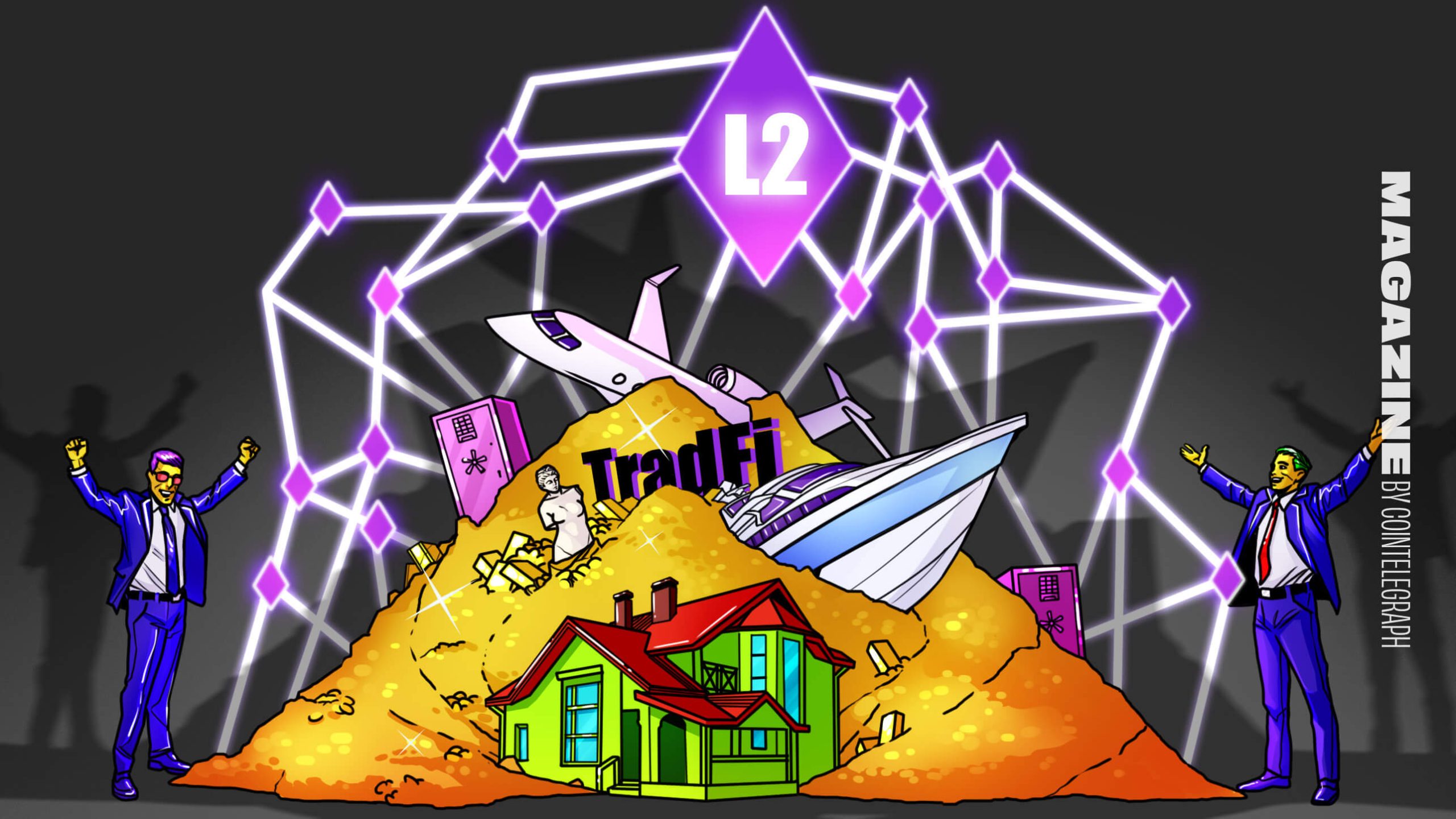
Investing in cryptocurrencies has become an increasingly popular way to diversify one's portfolio and potentially reap significant financial gains. However, the highly volatile nature of the cryptocurrency market can also expose crypto investors to substantial financial risk. To navigate this risky terrain and safeguard their investments, crypto investors need to adopt effective risk management strategies.
This article will guide you through the top 7 strategies (as well as additional tips) on how to manage risk in a crypto portfolio, helping investors to stay informed, control risk, protect their crypto investment, and seize opportunities in this exciting and dynamic market.
Crypto Portfolio Risk Management Strategies
Effective risk management is crucial for crypto portfolios, given the crypto assets' high volatility. Unlike fiat currencies, cryptocurrencies lack regulatory oversight, are vulnerable to hacking, and can experience sharp price fluctuations due to market sentiment and speculation.
By implementing effective crypto risk management strategies, you can minimize losses, optimize returns, and maintain a well-balanced portfolio that aligns with your financial goals and risk tolerance.&
Now that we know why risk management in cryptocurrency trading is crucial, let's discuss the actual strategies!
1. Diversification
Diversification is a risk management strategy that involves spreading your investments across various cryptocurrencies, sectors, and blockchain technologies. Diversifying your investment portfolio across different crypto assets allows you to mitigate the risk of investing in a single asset that may experience a sudden drop in value due to unforeseen circumstances.
Portfolio diversification can also help capture potential gains from different industries and underlying asset classes. By spreading investments across multiple coins with different use cases, market segments, and technological advancements, crypto investors can benefit from the growth potential of various sectors of the crypto market.
Some of the ways of diversifying your investment portfolio include risk-based diversification (RBD), sector-focused diversification (SFD), thematic diversification (TD), market cap-based diversification (MCBD), time-horizon-based diversification (THBD), etc.&
An RBD portfolio might comprise such coins as:
- Bitcoin (low-risk, low volatility, high liquidity)&
- Ethereum (higher risk, increased volatility, high liquidity)
- Binance Coin (mid-risk, moderate volatility, and liquidity)
- Chainlink (higher risk, increased volatility, lower liquidity)
- Uniswap (higher-risk, increased volatility, moderate liquidity)
- USD Coin (low risk, high liquidity, stable)
- Solana (higher-risk, high volatility, moderate liquidity).
Here's what an SFD portfolio might look like:
- DeFi (Decentralized Finance) Sector:& Aave (AAVE), Compound (COMP), and Maker (MKR)&
- NFT (Non-Fungible Token) Sector: Enjin Coin (ENJ), Flow (FLOW), and Chiliz (CHZ)
- Gaming Sector: Theta Token (THETA), Axie Infinity (AXS), and Decentraland (MANA)&
- Infrastructure Sector: Polkadot (DOT), Cardano (ADA), and Chainlink (LINK).
Here are some examples of TD portfolios:
- Decentralized Finance (DeFi) theme: Ethereum (ETH), Uniswap (UNI), Aave (AAVE), Compound (COMP)
- Privacy and anonymity theme: Monero (XMR), Zcash (ZEC), Dash (DASH), Pirate Chain (ARRR)
- Energy-efficient theme: Chia (XCH), Cardano (ADA), Ethereum (ETH), Solana (SOL).
- Gaming and NFT theme: Axie Infinity (AXS), Enjin Coin (ENJ), Decentraland (MANA), The Sandbox (SAND)
- Internet of Things (IoT) theme: IOTA (MIOTA), VeChain (VET), Waltonchain (WTC), Helium (HNT)
- Web 3.0 theme: Polkadot (DOT), Chainlink (LINK), Filecoin (FIL), Arweave (AR), The Graph (GRT).
Some market-cap-based crypto portfolio examples are described below:
- Large-cap cryptocurrencies: These are the least volatile and most established coins with a market capitalization of over $10 billion, such as Bitcoin (BTC), Ethereum (ETH), and Binance Coin (BNB).
- Mid-cap cryptocurrencies: These are typically newer cryptocurrencies that are gaining popularity and adoption, with a market capitalization of between $1 and $10 billion. Examples include Polkadot (DOT), Chainlink (LINK), Solana (SOL), etc.
- Small-cap cryptocurrencies: These are the most volatile cryptocurrencies and are typically newer, untested projects with a market capitalization of less than $1 billion.&
Let's look at a few examples of a time-horizon-based diversified portfolio:
- Short-term (1-6 months): Bitcoin (BTC), Ethereum (ETH), Binance Coin (BNB), Polkadot (DOT), and Solana (SOL). Investing in these assets provides high returns in a short period but also comes with increased risk.
- Medium-term (6-12 months): Bitcoin (BTC), Ethereum (ETH), Cardano (ADA), Chainlink (LINK), and Uniswap (UNI). This portfolio is less volatile and provides growth opportunities.
- Long-term (12+ months): Bitcoin (BTC), Ethereum (ETH), Polkadot (DOT), Chainlink (LINK), and Cardano (ADA). These coins have strong development teams and solid use cases and are expected to grow in value over the long term.
Types of cryptocurrencies to consider for diversification are highlighted below:
- Bitcoin is the world's first and largest decentralized digital currency. Bitcoin is undoubtedly one of the most popular choices regarding crypto portfolio diversification.
- Altcoins are cryptocurrencies that are not Bitcoin. This asset class was created as an alternative to Bitcoin, aiming to diversify the crypto market. Altcoins are generally riskier than Bitcoin, as they often have less established user bases and are subject to higher volatility. However, they also offer a high-risk profile investor the potential for higher returns. Altcoins are also differentiated into Layer 1 and Layer 2 coins based on their blockchain solutions.& &
- Utility tokens and DeFi projects: Utility tokens are typically issued by blockchain-based companies to incentivize users to participate in the network. Investing in utility tokens can offer the potential for high returns if the underlying product or service gains popularity and adoption. Investing in DeFi projects can provide exposure to various financial services unavailable for traditional investments through traditional financial institutions. However, remember that DeFi projects can be highly complex and risky.& &
- NFTs are unique digital assets stored on the blockchain that cannot be replicated or exchanged for something else. They often represent artwork, collectibles, and in-game items. NFTs offer a new way of investing in the crypto space with the potential for significant growth. However, investing in NFTs can be highly speculative and volatile. The value of NFTs can fluctuate based on various factors, including the popularity of the underlying digital asset, the rarity of the NFT, and the overall market sentiment.
- Stablecoins are cryptocurrencies pegged to a stable fiat currency, such as the US dollar or gold. They provide a hedge against the cryptocurrency market's volatility and can be used as a means of payment or store of value as they can be exchanged for one or more fiat currencies. Investing in stablecoins provides a stable source of passive income for investors and reduces the volatility of a crypto portfolio. However, investing in stablecoins doesn't offer the same potential for high returns as other cryptocurrencies due to their stable value.
Additionally, you can diversify your investment portfolio by also investing in traditional financial markets and other non-crypto assets such as real estate, stocks, bonds, etc.&
2. Dollar-Cost Averaging (DCA)
Dollar-cost averaging is a simple strategy that involves investing a fixed amount of money at regular intervals, regardless of market conditions. This strategy is designed to reduce the impact of market volatility on the portfolio and help investors avoid making emotional investment decisions based on short-term market fluctuations.
Assume you want to invest $500 in BNB over the next 5 months using the DCA strategy. You decide to invest $100 monthly, regardless of the BNB price. Let's see how this plays out:
Month 1
- BNB price: $200
- Investment: $100
- BNB purchased: 0.5
Month 2
- BNB price: $250
- Investment: $100
- BNB purchased: 0.4
Month 3
- BNB price: $300
- Investment: $100
- BNB purchased: 0.3333
Month 4
- BNB price: $350
- Investment: $100
- BNB purchased: 0.2857
Month 5
- BNB price: $400
- Investment: $100
- BNB purchased: 0.25
Total investment: $500
Total BNB purchased: 1.769
Using the DCA strategy, you've accumulated 1.769 BNB over five months. The average BNB price during this period was ($200 + $250 + $300 + $350 + $400) / 5 = $300. Your average purchase price for BNB was $500 / 1.769 = $282.55. In this example, the DCA strategy resulted in a lower average purchase price than the overall average price during the investment period.
As the price of BNB increased over time, the DCA strategy allowed you to benefit from the upward trend by lowering your average purchase price compared to the average market price. DCA can be a useful strategy for investors wanting to invest in the market without trying to time it. By investing regularly over time, investors can benefit from compound interest and potentially achieve long-term financial goals.
3. Position Sizing
Position sizing is a risk management technique used to determine the appropriate size of an investment or position based on the risk an investor is willing to take. This technique involves calculating the maximum potential loss that an investor can tolerate and adjusting the size of their investment accordingly. Although position sizing is often considered a crypto trading strategy, it applies to other forms of investing and asset management.
For example, if an investor is willing to take a 5% risk on a single trade or position, they should adjust their position size to limit potential losses. This enables investors to avoid taking on excessive risk and potentially suffering losses beyond their capacity.
When combined with other risk management strategies, position sizing can enhance an investor's chances of success in the markets while effectively managing their risks.
4. Portfolio Rebalancing
Portfolio rebalancing refers to adjusting the portfolio's composition to bring it back to its original asset allocations. It ensures the portfolio's risk-reward ratio remains consistent with the investor's goals and risk tolerance.
As cryptocurrency prices fluctuate significantly, rebalancing can help investors maintain their desired level of risk exposure while potentially increasing their returns. For example, if an investor's target allocation is to have 50% of their portfolio in Bitcoin and 50% in Ethereum, but due to market movements, their portfolio is now 60% Bitcoin and 40% Ethereum, they may decide to sell some of their Bitcoin and buy more Ethereum to bring their portfolio back to the target allocation.
Rebalancing can be done periodically, such as monthly or quarterly, or triggered by specific events, such as a significant change in the value of a particular cryptocurrency or a change in the investor's financial goals or risk tolerance.
5. Stop-Loss Orders
A stop-loss order is a valuable tool allowing investors to sell all or a portion of their holdings automatically if a particular asset's price falls below a predetermined level. By setting a stop-loss order, investors can limit their losses during sudden market downturns and protect their investments from significant declines.
For instance, if an investor buys Ethereum at $2,000 and sets a stop-loss order at $1,800, their Ethereum holdings would be automatically sold if the price drops to or below $1,800, thereby preventing further losses in a bear market.
Moreover, price alerts, such as CoinStats Alerts, can also help investors manage their crypto investments. These alerts notify investors whenever a specific cryptocurrency investment reaches a certain price, experiences a significant move, or when a big news publication releases breaking news that may impact the market.
6. Hedging
Hedging is a technique employed to safeguard an investor's holdings against adverse market fluctuations. This is accomplished by assuming a position that counterbalances the risk exposure of the original investment.
To illustrate, one can hedge their Bitcoin holdings by taking a short position in a Bitcoin futures contract. In the event of a price drop, the losses on the investment would be offset by the gains from the short position. An additional hedging example is using stablecoins, which maintain a steady value compared to other cryptocurrencies, to lock in profits during market instability.
Also read: 10 Best Crypto Investment Strategies
Additional Tips for Effective Risk Management
Now that we’ve covered the most popular crypto portfolio risk management strategies, it's time to delve into some additional tips to help investors maximize profits from market movements.
Perform Due Diligence
Investors must conduct thorough research before investing in any cryptocurrency project. This involves doing your own research and analyzing the team, technology, use cases, and market potential to make informed decisions.
For instance, before investing in a new DeFi project, it's vital to look into the backgrounds of the team members, assess tokenomics, evaluate the technology's security and scalability, estimate the platform's potential to disrupt the existing financial ecosystem, as well as the DeFi ecosystem, and estimate its overall market size.
Assess Your Risk Tolerance
Evaluating your risk appetite before making any investment decisions is an integral aspect of portfolio management. Consider key factors such as your personal investment horizon, financial goals, and life circumstances.
A conservative investor with a low-risk tolerance should prioritize more stable digital assets like Bitcoin and Ethereum and adopt a more passive investing style. Conversely, an aggressive investor with a high-risk tolerance might pursue riskier opportunities that have the potential to yield higher rewards, such as small-cap altcoins or newly-launched crypto projects.
Stay Informed
If you plan to actively manage your crypto portfolio, keeping yourself up-to-date with the latest news, developments, and market trends in the crypto space will require a significant investment of time.
You should stay regularly informed by following reliable and impartial news outlets, social media channels, and community forums regarding the cryptocurrency market and your entire investment. You may consider following experts and influencers on Twitter or LinkedIn, joining relevant Telegram and Discord groups, and subscribing to newsletters from reputable sources such as CoinStats, CoinDesk, and Cointelegraph.
Invest Only What You Can Afford to Lose
Crypto markets can be highly volatile, and investing in them always carries the risk of losing some or all of your investment. Ensure only to invest an amount you can afford to lose without jeopardizing your financial stability.&
If you're new to crypto investing, start with a small amount you're comfortable risking and gradually increase your investments as you gain experience and confidence.
Developing an exit plan in advance is an efficient portfolio management strategy and will help minimize losses if things don't work out in your favor. This means that you have determined a point of entry, a point of taking profit, and a point of exiting the position if it turns out to be a bad trade.
Be Cautious With Leverage
Leveraged trading can boost your returns by allowing you to borrow additional funds for investing, but it can also amplify your losses. It's essential to be cautious when using leverage and fully understand the risks involved.
Start with a low level of leverage and gradually increase it as you become more comfortable and experienced with the process. For example, if you're trading on a margin platform, start with a 2x or 3x leverage rather than jumping to a higher level, which could result in significant losses if the market moves against you. Always remember that the higher the leverage, the greater the potential risks, so use leverage prudently and only with risk capital that you can afford to lose.
Conclusion
Investing in cryptocurrency can be profitable, but it requires careful planning, research, and risk management strategies. By implementing these tips and techniques, you can minimize your losses, maximize your gains, and build a robust portfolio that can weather the volatility of the crypto market.
Remember to diversify your holdings, assess your risk tolerance, perform due diligence, stay informed, invest only what you can afford to lose, and be cautious of leverage risk. These strategies, combined with patience and discipline, can help you navigate the complexities of the crypto market and achieve your investment goals.
So, take the time to educate yourself, stay focused on your long-term objectives, and always keep a watchful eye on the ever-evolving crypto landscape. You can turn your crypto investments into a successful and rewarding venture with the right mindset and approach.
Disclaimer:& All information provided in or through the CoinStats Website is for informational and educational purposes only. It does not constitute a recommendation to enter into a particular transaction or investment strategy and should not be relied upon in making an investment decision. Any investment decision made by you is entirely at your own risk. In no event shall CoinStats be liable for any incurred losses. See our& Disclaimer& and& Editorial Guidelines& to learn more.

You can get bonuses upto $100 FREE BONUS when you:
💰 Install these recommended apps:
💲 SocialGood - 100% Crypto Back on Everyday Shopping
💲 xPortal - The DeFi For The Next Billion
💲 CryptoTab Browser - Lightweight, fast, and ready to mine!
💰 Register on these recommended exchanges:
🟡 Binance🟡 Bitfinex🟡 Bitmart🟡 Bittrex🟡 Bitget
🟡 CoinEx🟡 Crypto.com🟡 Gate.io🟡 Huobi🟡 Kucoin.




















Comments